Note
Access to this page requires authorization. You can try signing in or changing directories.
Access to this page requires authorization. You can try changing directories.
What this Document Tells You
The following steps illustrate the LinkedIn Learning and LTI 1.3 integration process:
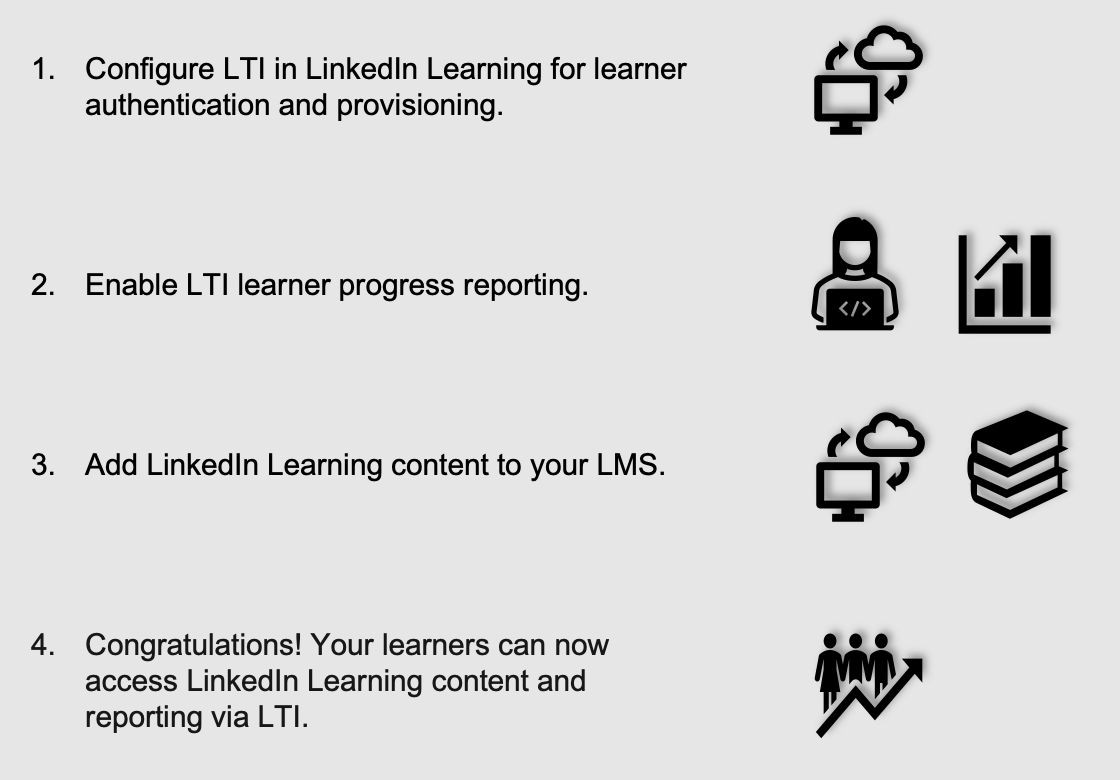
What is LTI 1.3/Advantage?
LTI is a standard used to integrate different learning platforms and tools to create a richer learning experience for the higher education sector. LTI 1.3 is the latest version of the LTI standard that focuses on improving security, enabling better content discoverability, and creating greater flexibility and extensibility. LTI 1.3 is the content discoverability standard for higher education using LMS providers such as Blackboard, Canvas, D2L, and Moodle.
LTI Advantage is a further set of extensions to LTI 1.3 that enhance its capabilities. Its main goals are to enable deeper integration between LMS and LTI tools and platforms, removing the need for custom integrations, and to provide a secure channel to transmit student and enrollment information. The three services included in LTI Advantage are:
Deep Linking: allows course creators to easily select and configure the content displayed to learners. For example, creators can configure a link that will launch a specific segment from a video, rather than displaying the full video and asking students to manually find the segment, saving time for both teachers and students.
Assignments and Grades: syncs grades, progress, and comments from multiple sources into an LMS platform’s gradebook, reducing faculty effort and any potential errors.
Names and Roles Provisioning: securely shares course roster and enrollment information. This enables admins and instructors to access reports on student activity within the tool, such as which enrolled students have or have not started an activity.
Things to Consider before Implementation
Since the LTI standard requires an LMS to launch the LinkedIn Learning content, the integration has distinct tradeoffs. Before opting for LTI, please review the sections below to ensure you fully understand the advantages and disadvantages of LTI integrations.
Advantages
If you are a LinkedIn Learning user or admin, you have the following benefits of LTI integration:
Seamless access to LinkedIn Learning for students and instructors
Engaging user experiences for students and instructors
Gradable content
Content easily integrated into LMS courses
Limitations
If you are thinking about using the LTI standard in your learning platform, keep in mind the following restrictions:
To access LinkedIn Learning content, users must have access to your LMS. If a user cannot log into the LMS, the user does not have access to LinkedIn Learning.
Content is only accessible from within the LMS. Educators cannot "deep link" to LinkedIn Learning content on class webpages, wikis, or other external systems.
If your organization uses another form of Single Sign-on (SSO) with LinkedIn Learning, the SSO connection must use the same unique user ID as your LTI connection to prevent duplicate profiles.
Important
Please use the corresponding guides for your desired LMS integration. If you do not see your LMS listed below please continue to the next step.
Prerequisites
You must be a designated LinkedIn Learning administrator to access Integration settings. If you are not an administrator, please reach out to your internal LinkedIn Learning lead, who can add you as an administrator in the system.
What is LTI and LTI v1.3?
The IMS Learning Tools Interoperability (LTI) specification allows Learning Management Systems (LMS) or platforms (such as Canvas) to integrate remote tools (such as LinkedIn Learning) and content in a standard way. LTI v1.3 builds on LTI v1.1 by incorporating a new model for security for message and service authentication.
LinkedIn Learning is compliant with both LTI v1.1 and v1.3 coding standards. This article will guide you through the specific setup to allow instructors to use LinkedIn Learning with Canvas LMS via LTI v1.3.
- Log into LinkedIn Learning as IT Admin or Full Admin, Go to Admin portal and navigate to Authentication settings:

- Click Add new SSO button in Configure single sign-on page and select “LTI 1.3”.
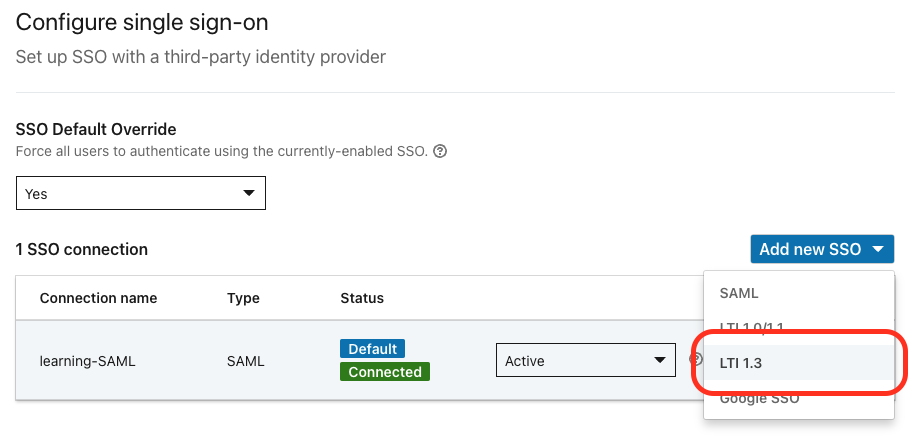
- (optional) Name your new SSO in Basics tab (e.g. LTI 1.3 Canvas) and click Next.
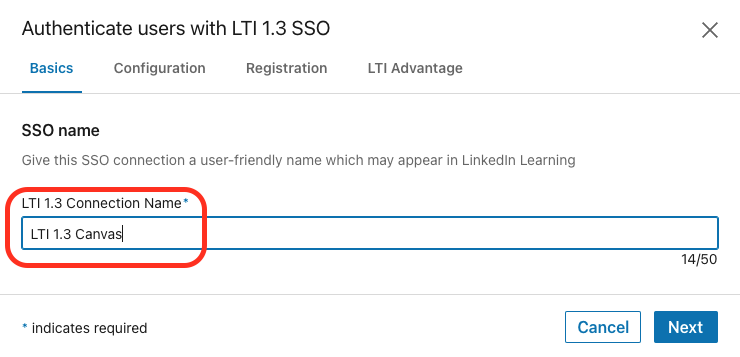
- Keep the window open. We will be using those values later.
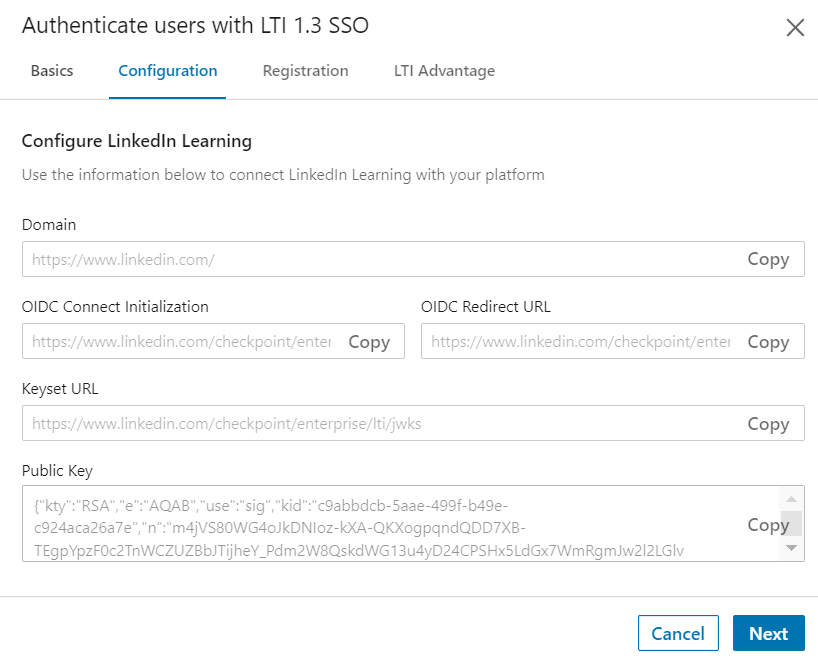
- Use a different browser window / tab to log into Canvas as an admin. Navigate to Admin section:
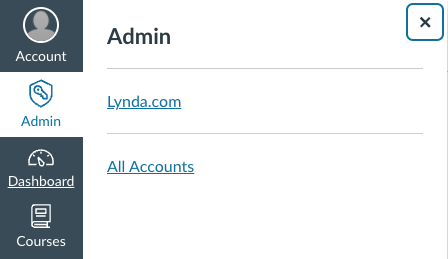
- Navigate to Developer Keys in the navigation.
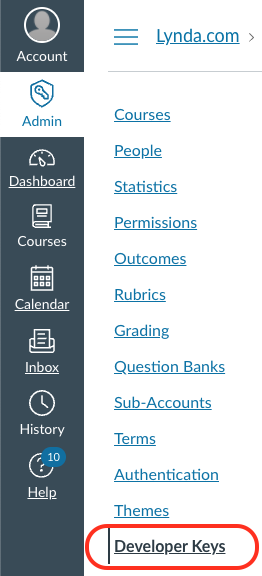
- Add an LTI Key by clicking + Developer Key and choose LTI Key.
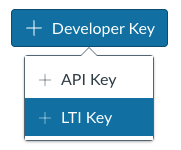
Fill in Key Settings information.
a. Key Name - Set to LinkedIn Learning

b. Redirect URIs - Copy the value from OIDC Redirect URL field in LIL.

Paste the value in the following fields in Canvas.


c. Method - choose Manual Entry.

d. Title Set to LinkedIn Learning.

e. Description - anything.

f. OpenID Connect Initiation Url - Copy the OIDC Connect Initialization URL out of LIL.

Paste the value in the following field in Canvas.

g. JWK Method - Choose Public JWK URL.

h. Public JWK URL - Copy the Keyset URL out of LIL.

Paste the value in the following field in Canvas.

The end result should look like:
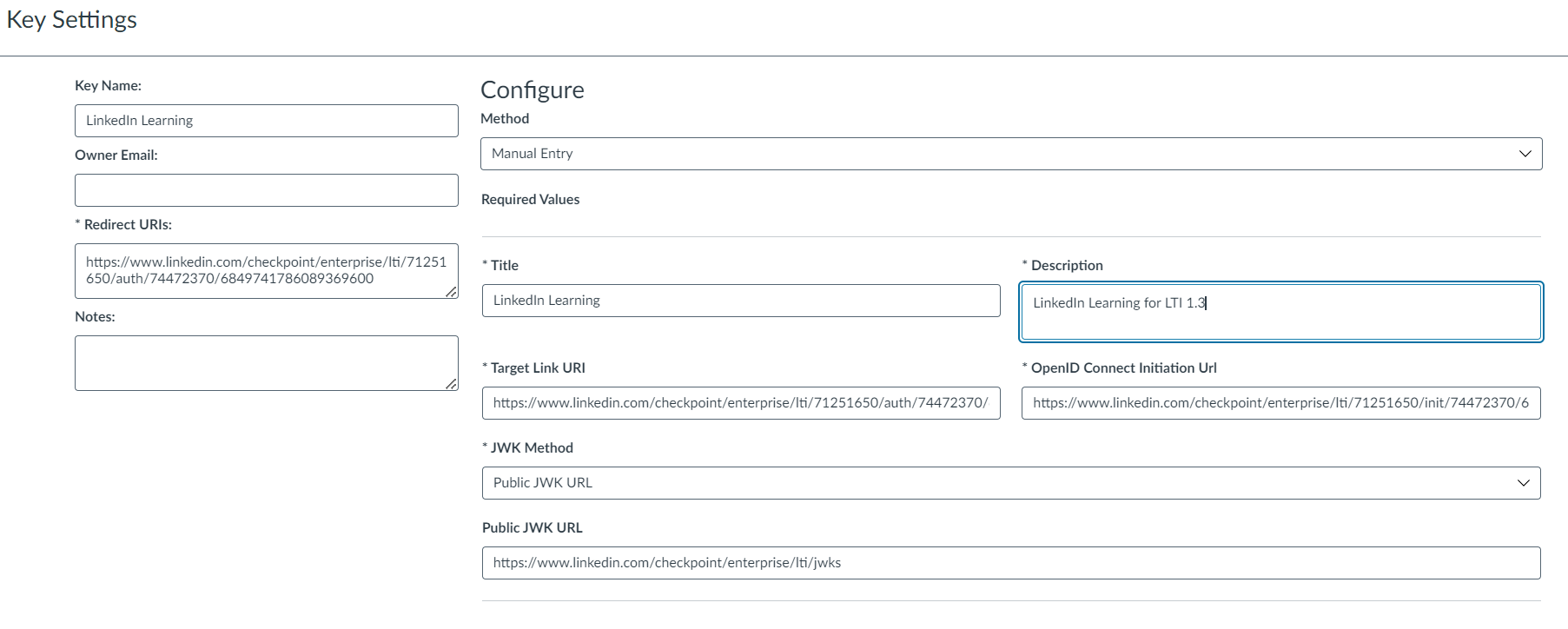
In the LTI Advantage Services section, you want to check everything to ON.

- Copy the Domain value out of LIL.

Paste the value In the Domain field in the Additional Settings section
Important
Please be sure to remove the slash / at the end of the URL - You will receive an error if included.

Make sure the Privacy Level is set to Public.

- In the Placements section, click the drop-down menu and choose Editor Button to add it in.
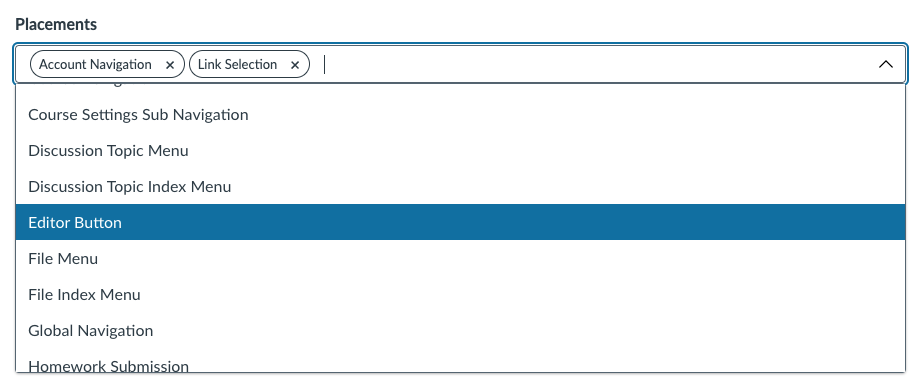
- Click the drop-down menu in Placements section again, and add Assignment Selection in.
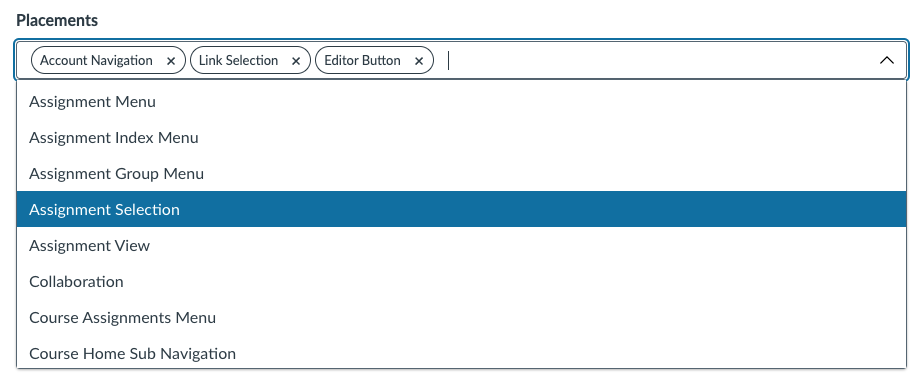
Scroll down to the Editor Button drop-down setting. Expand it by clicking the caret icon, and fill in:
a. Target Link URI - Set to
https://www.linkedin.com/learning-admin/lti-deep-link(without quotes).
b. Icon Url - Set to
https://static-exp1.licdn.com/sc/h/3dio89ba7ceqktt0kek3tla5w
c. Text - Set to LinkedIn Learning.

d. Selection Height - Set to 800.

e. Selection Width - Set to 1000.

The end result should look like the following.
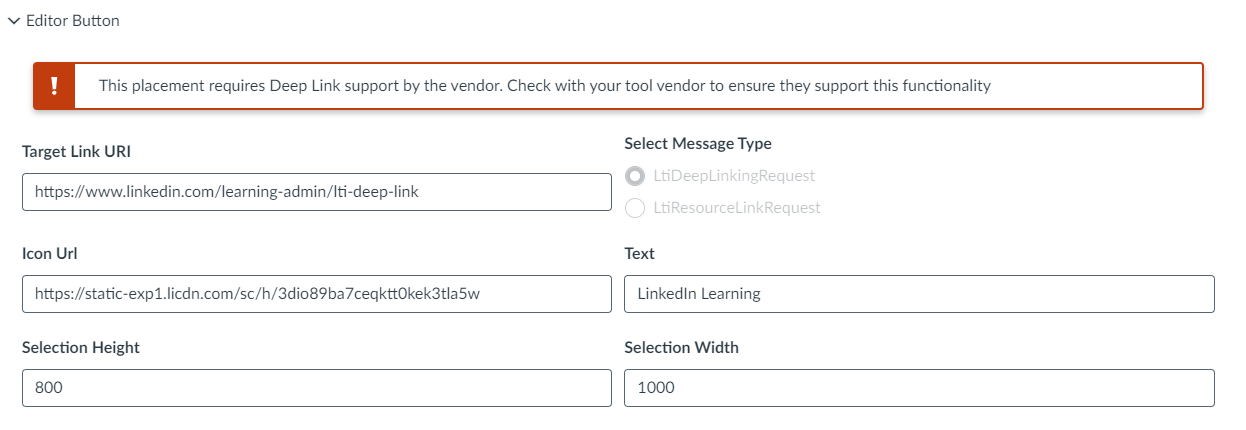
Scroll down to the Assignment Selection drop-down setting. Expand it and fill in:
a. Target Link URI - Set to
https://www.linkedin.com/learning-admin/lti-deep-link.
b. Select Message Type - Select LtiDeepLinkingRequest
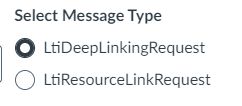
c. Icon Url - Set to
https://static-exp1.licdn.com/sc/h/3dio89ba7ceqktt0kek3tla5w
d. Text - Set to LinkedIn Learning.

e. Selection Height - Set to 800.

f. Selection Width - Set to 1000.

The end result should look like:
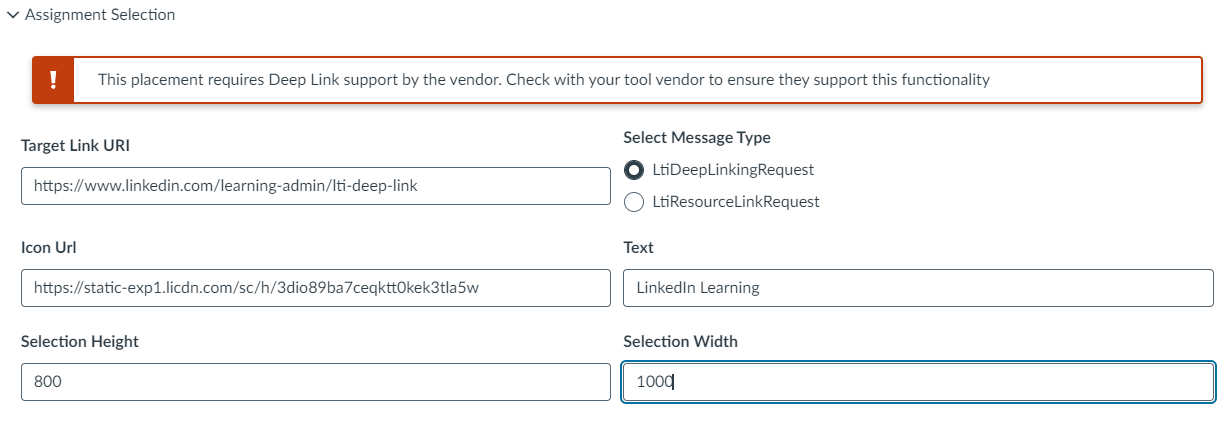
Click Save button.

- In the Developer Keys list, find the key we just set up and toggle the State to ON, and copy the value (Client ID) in Details column.

In Canvas, go to the account, subaccount, and/ or course that you’d like to be available in as an LTI 1.3 app.
- Click Settings > Apps > +App.
- Choose By Client ID* as configuration type and enter the Client ID of the Developer Key (from previous step).
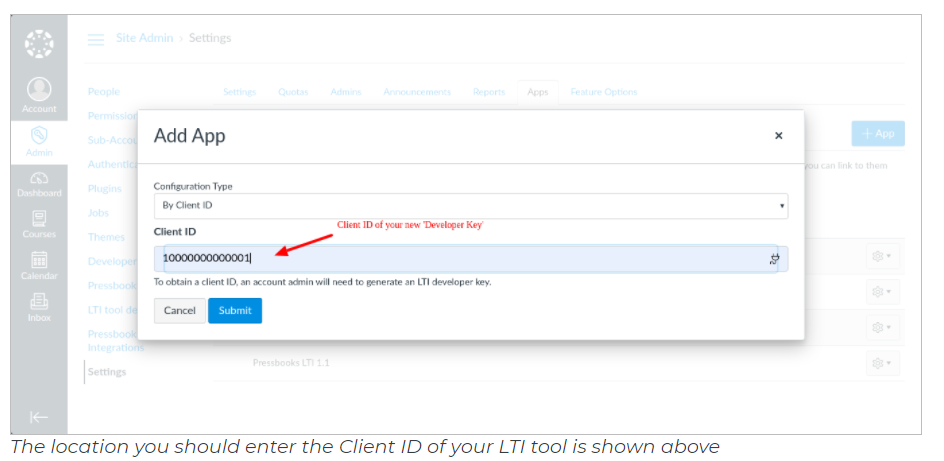
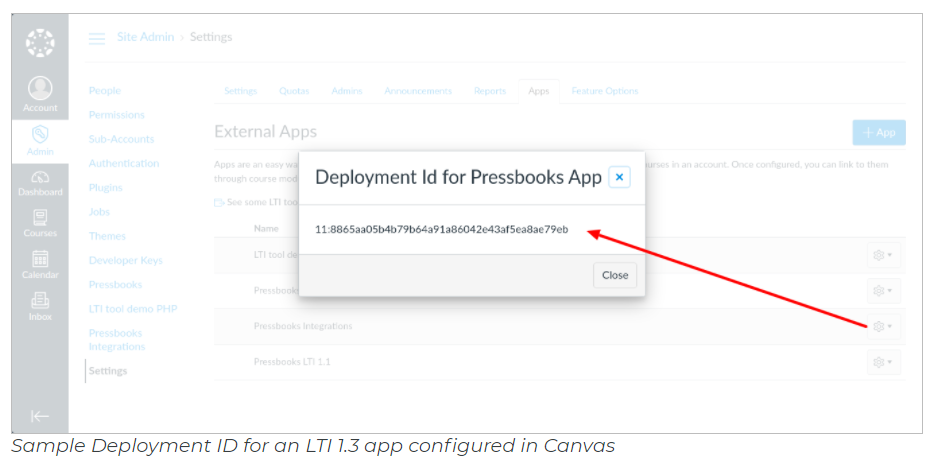
- Store and save your Deployment ID for step 20.
- Next, we are adding the LinkedIn Learning app to Canvas. Navigate to Settings in the navigation.
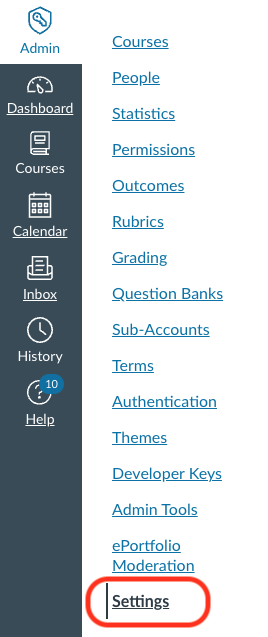
- Select Apps tab, click View App Configurations button, and then click + App.


- Change Configuration Type to By Client ID by clicking the drop-down menu.

Paste in the Client ID value we copied in step 16.

Click Submit, and click Install.
Go back to LinkedIn Learning browser window / tab, click Next, and fill in:
Client ID - Paste the Client ID value we copied in step 16.

Deployment ID - Paste the Deployment ID value copied in step 16.

OIDC Issuer - Set to
https://canvas.instructure.com.
Platform OIDC Authentication URL - Set to
https://canvas.instructure.com/api/lti/authorize_redirect.
Select Keyset URL.
Platform OAuth 2.0 Keyset URL - Set to url like
https://<your-canvas-domain>/api/lti/security/jwks. For example, if your canvas domain isexample.instructure.com, then you should fill inhttps://example.instructure.com/api/lti/security/jwks.
Platform OAuth 2.0 Token Retrieval URL - Set to url like
https://<your-canvas-domain>/login/oauth2/token.
External ID Parameter Name:
Use this setting to determine which authentication attribute is used to identify users. The default value is Subject. You also can use Email Address or a custom attribute name. For example, your LMS may provide an additional identifier, like lis_person_sourcedid.

The end result should look like the following:
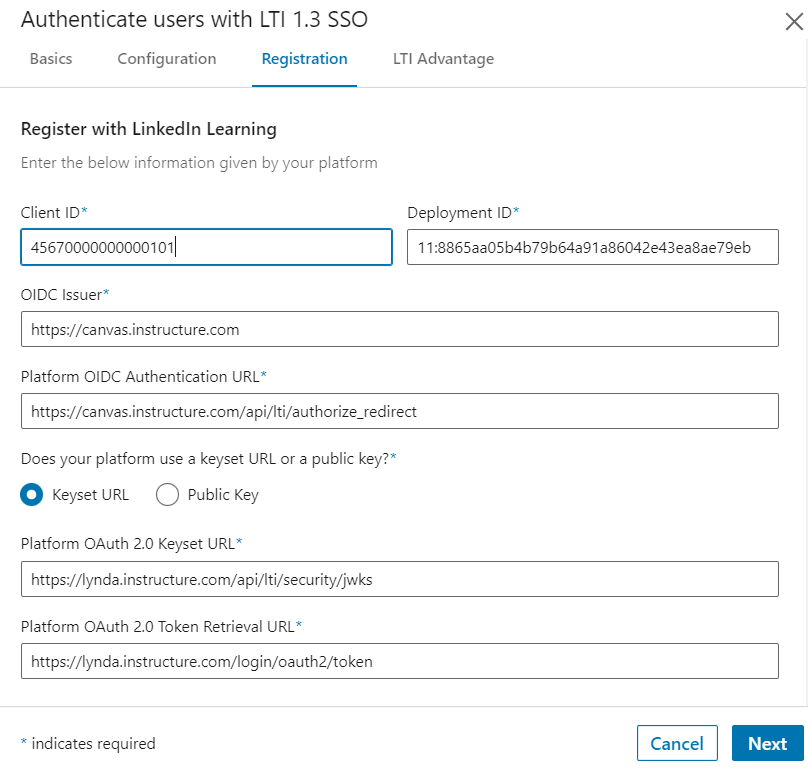
Click Next, and:
Toggle Enable LTI Advantage switch to ON.

In the textbox fill in your Canvas domain such as
example.instructure.com, click Add.You will also want to add
canvas.instructure.com, click Add.
Toggle Reporting switch to ON.

Toggle Deep Linking switch to ON.

Click Save.

- In SSO connections table, find the SSO we just saved, click Status drop-down menu, select Active.

- Click Activate button.
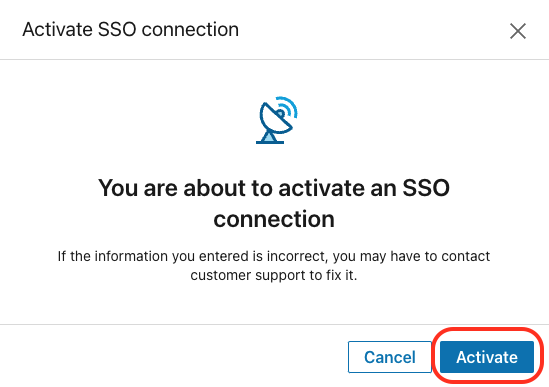
- Your SSO connection should look like this, and congratulations, you are all set!

LinkedIn Learning will now appear in the WYSIWYG editor as an External Tool for assignment submission types in your Canvas.
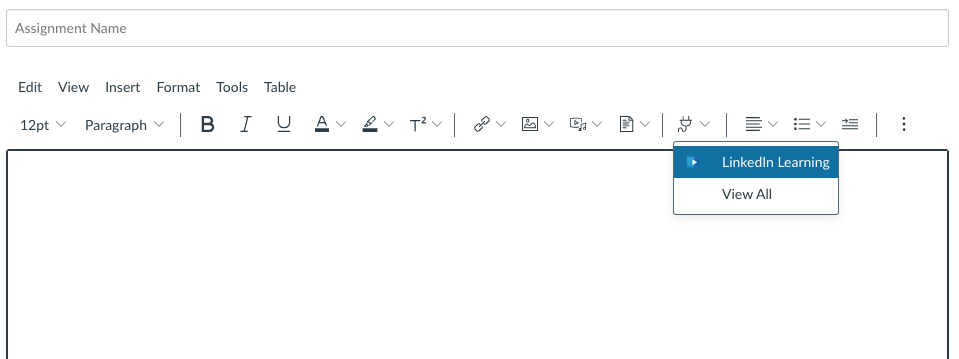
Common Issues & Troubleshooting Tips
Issue: if you find when launching the LTI Advantage Tool that it freezes or gets stuck in a loading screen. The issue could be due to cross-site tracking being enabled on your browser.
Fix: you will want to disable cross-site tracking on that browser. Please work with your IT team for assistance.
Issue: If you experience a strange nested issue (or error) after clicking the Add button for either a Course or Video in the LTI Advantage tool the issue could be the domain you indicated in step 4.
Fix: You want to be sure you are including either https://www.linkedin.com or just www.linkedin.com. If you’re already using one option try using the other to see if that fixes it. You may also need to clear your cache.
Issue: If when launching the LTI Advantage Tool, you receive an “Things Aren’t Loading” error
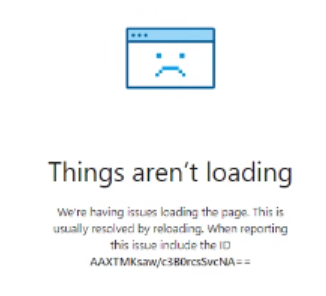
The issue has to do with being logged into LinkedIn Learning or having an already active Learning session in another tab and/ or browser.
Fix 1: Try logging out of LinkedIn Learning in any tabs or browsers it is currently active in.
Fix 2: Try clearing your cache and cookies or launching the LTI Advantage Tool in a private/ incognito browser window.
Issue If you receive an "Oops! It's not you. It's us. Give it another try, please." error.
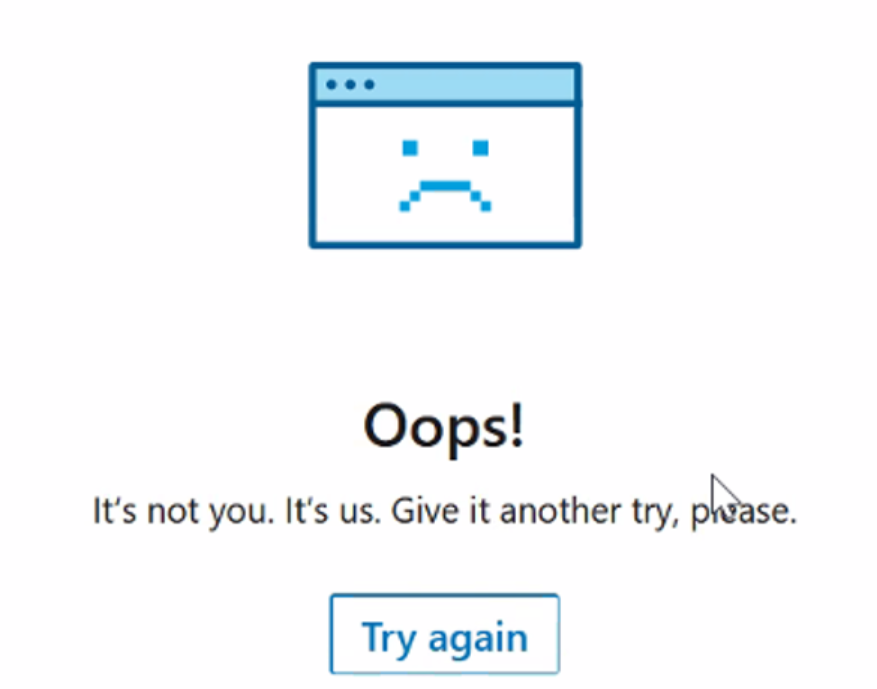
It means you are missing hostname(s) needing to be added in the LTI Advantage Tool tab in the LTI 1.3 configuration settings in LinkedIn Learning.
Fix 1: you will want to add those missing hostname(s) and test it again.
To add those hostname(s), you want to be logged into the Admin Tool in Linkedin Learning.
Hover over Me > Authentication
Next you want to click the 3 dots to the right of the LTI 1.3 configuration in the center panel > followed by Edit
Click on the LTI Advantage Tool tab
Type the hostname into the field > click the Add button. Repeat for multiple names then click Save in the bottom right.
Fix 2: If this error is intermittent, you may need to reach out to LinkedIn Learning Support for further assistance, but you can try a different browser or clear your cache to see if it helps.
Issue: If you see an “Unable to connect to www.linkedin.com” error

This is likely due to a mismatch with the configuration.
Fix: Check to see if the Redirect URLs, the Target Link URI and the OpenID Connect Initiation URL are configured correctly. Any mismatch in values will result in the LTI Advantage Tool to fail. If the issue continues, please reach out to LinkedIn support.
Issue: When trying to add a course from the External tool, if you receive an error - "Couldn't find valid settings for this link."
Fix: Under Step 10, please ensure the domain field has no "/" in the Canvas configuration field. Please remove the "/" to resolve this issue.
Frequently Asked Questions
Q. Are all users able to connect their LinkedIn profiles through an LTI connection?
A. Yes, LTI supports profile association.
Q. Which provisioning types are supported?
A. LTI requires JIT (just in time) provisioning and is automatically configured. This condition means that, upon the first successful LTI authentication, LinkedIn Learning automatically creates a user profile (if a user does not already exist).
Q. Can SAML SSO and LTI be enabled at the same time?
A. You can enable both authentication options at the same time, but we recommend that you consult your dedicated Technical Consultant before adopting this method. You might unintentionally create duplicate accounts if the same group of users has access to both LTI and a second SSO connection.
Q. Is the Unique User ID value configurable?
A. Yes, you can configure the Unique User ID in the External ID Parameter Name field.
Q. Can LTI launches be loaded in an iFrame?
A. No, LTI does not support iFrames.
Support
Below you can find supporting documentation and other resources.
Supporting Documentation
Technical Issues
If you have technical issues with the SSO setup, contact your account team or application support team through the LinkedIn Learning Help Center.
LinkedIn's Privacy and Data Security Policy
https://www.linkedin.com/legal/privacy-policy
LinkedIn Security Contacts
If you have any security questions or you would like to report a security issue, write to us at security@linkedin.com.
Additional Resources
For more information on integrating LTI v1.3 with your LMS and LinkedIn Learning, see IMS Global’s LTI 1.3 Implementation Guide.